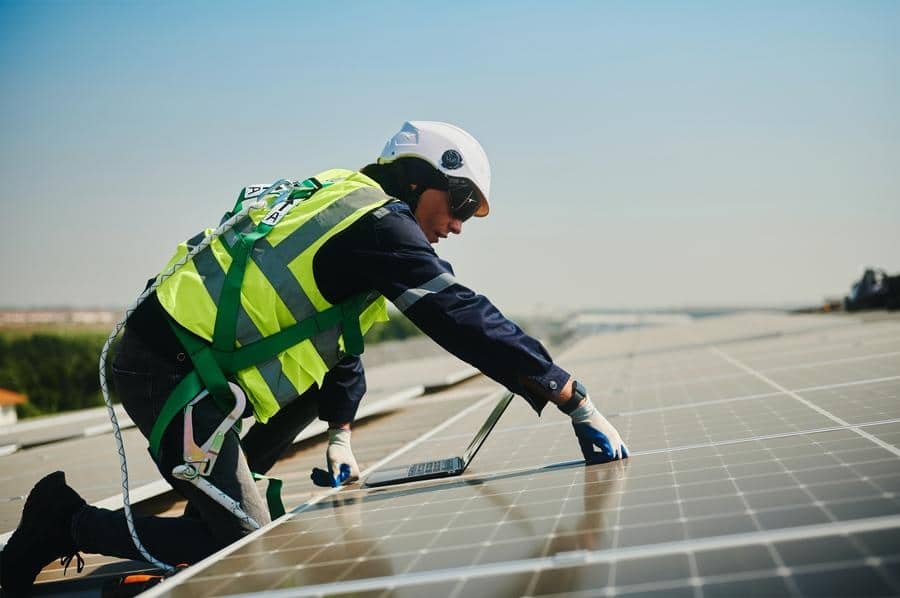It should go without saying that solar panels are built tough. As their job involves taking the full brunt of the elements 24/7 throughout their service life, solar panels undergo extensive durability testing before hitting the market. As such, even at the end of warranty coverage (typically 25-30 years), they can still produce an estimated 80-90% of their rated capacity.

However, while slow, wear and tear will inevitably degrade a solar panel’s performance. One symptom is your energy bill seemingly getting higher than in months or years past (assuming your consumption habits remain more or less the same). It can only mean that it isn’t collecting as much solar energy as it did before.
But before considering swapping out a panel or two, we advise conducting maintenance on it first. Sometimes, problems affecting solar PVs can be remedied by wiping dirt and dust off, among others. Here’s an in-depth seasonal guide for solar panel maintenance.
1. Summer
New Zealand gets around 83 days of sunshine annually, with certain areas receiving up to roughly 100 days. Most of these sunny days naturally occur in the summer months, when daytime can last as late as 10:00 p.m. (1)
It pays to maximise the panel’s generation capacity during this time. More importantly, the preceding spring may have blanketed the panels in pollen or air pollution, which can inhibit the collection of solar energy. Rain usually washes the dirt and dust off, but don’t rely on it to leave the panels spic and span.
Cleaning solar PVs is as easy as drenching a soft sponge or window squeegee in water. We don’t recommend a soapy solution, as abrasives in soap risk scratching the glass surface, which can impede solar collection. If you must use a cleaning agent, use one specifically designed to clean solar panels.
It’s safe to clean even when the panels are running. Hiring a professional solar panel cleaning service is also a viable option for commercial properties that lack the time or resources to do so.
2. Autumn
Outside the dust buildup, summertime presents little to no inconvenience in maintenance. However, autumn presents its own problem in the form of falling leaves and branches.
This isn’t a problem if your property isn’t close to a grouping of trees, but it can be a pain in the neck otherwise. Fallen leaves and branches can do more than block precious sunlight. If not cleared carefully, they can scratch the glass panel and introduce long-term issues to solar power generation. As they’re dry, they also pose a significant fire risk.
Strong autumn winds can shake off more leaves and branches, even carrying them to solar panels close enough to a cluster of trees. It also doesn’t help that, according to NIWA data, autumn 2025 is poised to be dry because of the ongoing La Niña phenomenon. (2)
Maintenance in autumn isn’t just concerned with removing the leaves and branches on the panels but also underneath them. Pick them off with care to avoid scratching the glass. As for cleaning under the panels, some tools you can use include a retractable broom, gutter whisker, and leaf blower.
3. Winter
Snow is both a boon and a bane to solar panels. On one hand, the whiteness of snow can help reflect daylight toward the panels, even under cloud cover. Winter temperatures can cool the panels, maintaining optimal performance.
On the other hand, enough snow accumulating on top of the solar panels poses a risk to them and their framework. The weight of just a few inches of snowpack can exert undue strain on the supports. Additionally, the framework itself can prevent some of the snow from sliding off angled solar panels.
Ice isn’t typically a problem for residential or commercial solar panels, but cloudy ice can reduce solar input. It’ll melt with the occasional sunlight or warming weather, but the process will take longer when trapped beneath a substantial snowpack.
Physically removing the snow with tools should be done as a last resort due to the risk of, again, scratching the glass. In fact, it isn’t advisable to use the same metal tools used to remove snowpack on roofs. Instead, try less-invasive methods such as changing the angle (if possible) or applying a hydrophobic coating on the panels before the first snowfall.
4. Spring
Finally, we come full circle to spring, with the solar panels fresh (and possibly drenched) from the snowmelt. While not totally watertight, they’re designed to keep moisture out in most conditions as long as their structural integrity is intact. If you managed to do so by avoiding using damaging tools and techniques, your panels are fine.
During this season, pollen will typically be your main concern. According to Allergy NZ, pollen season can last between late winter and early autumn, as pollen from grass and pine trees in the North Island moves south. Fortunately, the worst it can do to a solar PV system is blocking out the sunlight. (3)
As with summer maintenance, clean the pollen and dust off of the solar panels with a wet sponge or squeegee. Obviously, don’t let someone who’s allergic to pollen do this job.

In Conclusion
Investing in a high-quality commercial solar panel from our array of options here at World Solar can help you ease the burden of having to maintain it even when it is not necessary. However, while these panels are built to withstand harsh conditions, taking simple preventive measures each season—from gentle cleaning in summer to careful snow management in winter—can help maintain their efficiency and extend their lifespan.
Remember, a little care goes a long way in maximizing your solar energy production and keeping those power bills in check.
References
1. "Guide to New Zealand Weather & Climate", Source: https://www.discovernewzealand.com/blog/nz-weather-and-climate-13
2. "Seasonal Climate Outlook November - January 2025", Source: https://niwa.co.nz/climate-and-weather/seasonal-climate-outlook/seasonal-climate-outlook-november-january-2025
3. "Pollen", Source: https://www.allergy.org.nz/conditions/environmental-allergies/pollen/








